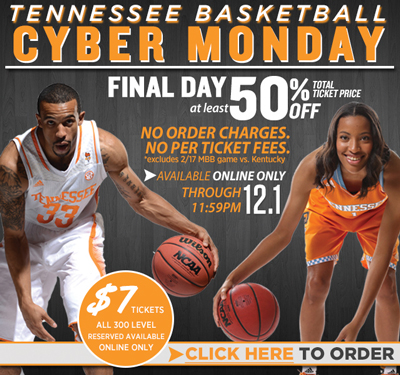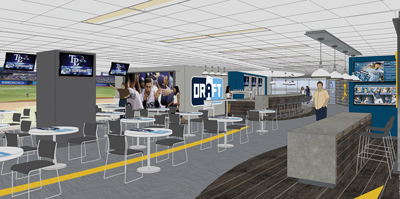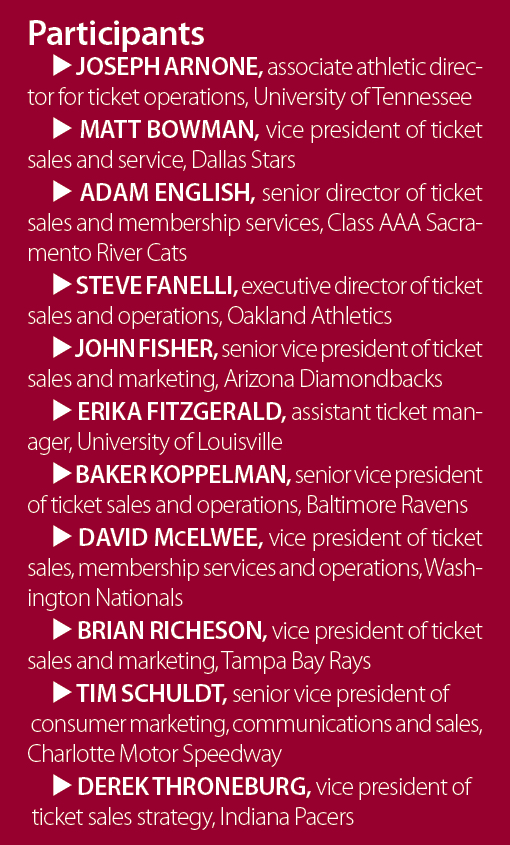Ticketing executives across sports are constantly looking for new ways to engage the consumer. A key component of that is keeping a finger on the pulse of the industry and tracking the moves made by peers. SportsBusiness Daily’s Mark Bulovas asked ticketing executives about trends they are watching and the best practices they employ. From secondary ticketing and dynamic pricing to mobile tickets and data collection, here are highlights of their responses, which were submitted via email.
TRENDS
What are two trends you’re watching closely in ticketing and why?
ENGLISH: The use of technology to more efficiently and effectively sell tickets, and expanding premium-seating
areas and experiences to effectively grow revenue. Social selling has become a necessity, and while it cannot replace phone calls, it can certainly complement them. Utilizing technology with a plan to teach and coach it can also help in recruiting the best young talent for the industry. Next, I have seen success in taking underutilized parts of our ballpark and creating unique premium experiences. At times taking out seats to replace them with premium-seating options can take an area that was underperforming and make it a high-revenue-producing area. Fans want premium experiences.
Fanelli: How beacon technology will grow and potentially change the overall venue experience and how the recent StubHub/Spectra deal will impact the industry. Both are anchored in the principle that solid data collection through multiple sources will help organizations create a 360-degree view of consumers. The end result should be more data to make pricing decisions, additional leads to try and convert to appropriate upsell offerings, and better overall fan engagement.
Koppelman: First is the impact the secondary market is having on primary ticket sales. The mindset and goals of many ticket buyers have changed and we have had to re-evaluate our approach to primary ticket sales. The second is the varying ways that teams engage in their customer relationships. Every market is different and one size does not fit all.
Arnone: The first trend is season tickets and the secondary market. The second trend would be dynamic pricing. [In light of the secondary market], we as an industry are looking at the viability of season tickets. Will folks stop purchasing season tickets because they would rather purchase good seats for the two games that they want to go to? Or is it financially benefiting folks to keep purchasing season tickets since they can resell the tickets that they don’t need on the secondary market? I think it is the latter, but it is a trend worth keeping an eye on. … With dynamic pricing, the market determines the price you sell single-game tickets. With that in mind, schools need to consider dynamic pricing to sell their distressed inventory and maximize their revenue on high-profile games.
McElwee: The membership model. I originally viewed memberships as the latest and greatest trend [and] questioned its sustainability — and could not have been more wrong. The benefits stratification, providing experiences unobtainable on the secondary market, the year-round engagement touch points, the deeper connection between the team and the fan — it all works. I don’t see the industry taking a step back from this any time soon. It’s here to stay and I am interested in seeing what the next wave of evolution looks like.
 |
Programs such as Ballpark Pass, introduced last year by the Oakland Athletics, give teams new ways to target different segments of fans.
Photo by: Enter Name Here |
Fitzgerald: Mobile/digital ticketing. We’ve been following the transition for a few years between hard tickets to print at home and now to mobile tickets to constantly provide fans the latest technology and ease of access to their tickets. We also are always watching our consumer demographics and dynamics as well to better understand them at all times.
Bowman: Obviously, the secondary market is looming increasingly larger every day. Teams have to manage and balance their organic demand from true fans with their strategy on the secondary market, and there are really no “right” answers. It’s a relatively new and ever-changing space, and each team has to manage it based on their own goals and stick to their particular game plan. It’s something we talk about on a daily basis.
Throneburg: As startups (SeatGeek, Gametime, etc.) develop streamlined ticket-focused apps for secondary-market sales and invest in marketing to promote those services, teams must find innovative ways to capture data for fans that enter their venue. Mobile ticketing, in-venue technology networks and fan engagement apps will play a major role in identifying fans in order to place them on the correct marketing path for future revenue opportunities.
Fisher: The primary and secondary markets continue to converge and the lines between the two are more blurred now than ever. It wasn’t long ago that teams would never want their primary tickets listed together with secondary tickets, but now it’s fairly common. The recent announcement by the 76ers to have StubHub be their official ticketing service is another big step in this direction and it will be watched closely by the industry. Buying behaviors have changed in recent years and it’s no longer simply having sales reps making 100-plus calls per day. We need to sell differently. We need to be more creative and utilize email, text messaging and other technologies to sell in today’s environment. The phone call will never go away, but as managers we need to embrace these changes, encourage our staffs to be creative, and find new forms of tracking and accountability.
Schuldt: The integration and use of technology in making the transactions more accessible from anywhere there is
connectivity. How that technology helps us build a consumer profile so we can tailor our messaging and ensure we are communicating to them about what they want, when they want it and how they want to receive it. Also how does it translate to assisting us in building a more meaningful relationship with our customers and how can we enhance their event experience through those technology investments? From CRM, to ticketing systems, to email, to social media, our rewards platform, all of this technology is helping us be smarter and productive with our customers.
Richeson: As the emergence of the secondary-ticket market has raised the importance for benefits for season-ticket holders and membership benefits, teams are becoming more innovative with their season-ticket offerings.
WHAT’S WORKING
What is one marketing program or incentive that proved to be effective for you in selling tickets and how did the initiative work?
Fanelli: In 2015, we offered a Ballpark Pass with the help of MLB.com and Experience. While traditional season tickets are still a core product for our business, the Pass model proved to touch a different audience and gave us a glimpse of how future fans may want to interact with our product. The concept was to sell a fixed-price pass granting access to the ballpark for a set amount of games, and buyers could opt in to receive tickets the day of each event. We’re hoping to expand our program this season to validate our assumptions and grow the program.
 |
The University of Tennesee has found success with offers such as Cyber Monday, which features $7 tickets for basketball games.
|
Koppelman: Having a wait list is the best incentive any team can have. And even with all the technology we have these days, it’s hard to beat the impact of a one-on-one phone call in ticket sales.
Arnone: As far as ticket sales, the most successful program has been the Black Friday/Cyber Monday promotion where tickets were sold for all basketball games for $7. Looking at other revenue streams related to tickets, another successful marketing program was offering free tickets to students in the local school system based on school attendance. There was a high redemption rate for the free ticket and the result was higher concession sales for those games.
McElwee: Creating our Inside Service program — a subdivision of our services team to manage our partial plan business; basically inside sales for renewals, upselling and service. The sheer volume of partial accounts and their partners necessitated a systemic program change and short of adding seven full-time staff members, something had to be done. By mirroring our inside sales program on the services side, we were able to maintain a high level of customer service for our full and half [season-ticket-holder] base, deliver excellent service to our partials, mention upselling and renewals, and grow and groom the next generation of service superstars.
Fitzgerald: The highlight of our fall/winter sports campaign was joining forces with ReplyBuy, a company that sends text alerts when tickets become available, allowing fans to purchase with a quick reply of a text. This has allowed us to move last-minute tickets and a large amount within a very short period of time.
Bowman: We have made a shift to a more digital/online focus with our marketing campaigns, partly based on a need to keep our budget lean, and partly due to the shift we’re seeing industrywide from traditional channels. We’re putting a lot of emphasis on [search engine marketing] and online retargeting, which is getting us some really great analytical capabilities from a marketing tracking standpoint. But we’re like most other teams in that we’re still identifying what works and what doesn’t. It’s an exciting new world in that area.
English: Our membership program that I implemented two years ago has helped grow our season-ticket
 |
The Tampa Bay Rays are developing an exclusive season-ticket club called “The Draft Room” that will elevate the experience at the ballpark.Please enter image description here.
Photo by: Tampa Bay Rays |
membership. Adding value to our packages through unique experiences that appeal to our three membership categories — Cat Crazy, Family, and Business — has resulted in fans associating more value with our memberships and has yielded higher renewal rates and more sales.
Richeson: We have developed a Rays Rewards incentive program for season-ticket holders, as well as an exclusive season-ticket club called “The Draft Room.” It is important to invest in the experience of our season-ticket holders, and providing unique benefits for our biggest fans.
Throneburg: Personalization of season-ticket plans. Due to all of our everyday lives seeming to move faster and faster with family and professional commitments filling our daily schedules, teams should explore the development of season-ticket plans and experiential elements with various personalization and customization options. As companies and general consumers become more strategic about managing their finances, showing emotional returns on the season-ticket experience will become even more important.
Fisher: Our marketing campaign this spring is Join The Evolution, which was developed on the heels of unveiling new uniforms and fits well with our recent player acquisitions. Instead of using direct “buy tickets” messaging in the campaign, we are encouraging people to instead go to an Evolution page on our website where they will find exclusive videos and other content. While there, they can engage with us through social media and request ticket information. We have already seen an increase in leads that have been converted into season-ticket packages.
Schuldt: It’s all in value. Are you delivering exceptional value for the price? We continue to build experiential bundles or packages. … So we continue to try to innovate on the experience — enhancing add-ons that immerse our consumers in an exciting day or week to one of our events, and make sure they feel like they received an exceptional experience at a very good value.








